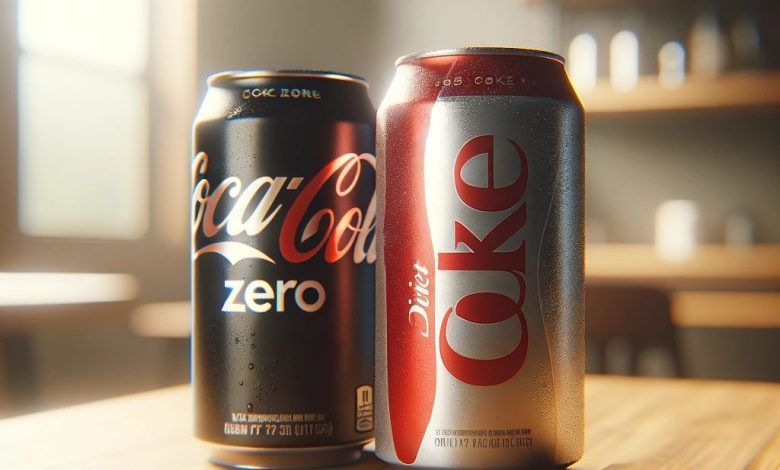
What’s the difference between Coke Zero and Diet Coke?
Let’s delve deeper into the nuances of Coke Zero and Diet Coke, two popular choices for those seeking the familiar fizz of Coca-Cola without the sugar and calories. While both aim to provide a guilt-free soda experience, they differ in flavor, target audience, sweetener composition, ingredient emphasis, and branding. Understanding these distinctions can help you choose the beverage that best suits your palate and lifestyle.
ADVERTISEMENT
1. The All-Important Flavor Profile: A Matter of Taste
ADVERTISEMENT
Coke Zero was meticulously crafted to emulate the taste of original Coca-Cola as closely as possible. The goal was to capture the essence of that classic Coca-Cola flavor profile, minus the sugary sweetness. This pursuit of authentic Coca-Cola taste is achieved through a specific blend of sweeteners and flavorings, designed to mimic the original’s complex taste. This makes Coke Zero a compelling option for those who crave the familiar taste of Coca-Cola but are looking to reduce their sugar intake.
ADVERTISEMENT
Diet Coke, introduced in 1982, has a distinct flavor profile that sets it apart from both original Coca-Cola and Coke Zero. It’s often described as lighter and crisper, with its own unique blend of flavors. Long-time Diet Coke drinkers often appreciate this difference and consider it a refreshing alternative. The subtle nuances in flavor are a result of a different recipe and the absence of certain flavor components present in Coke Zero.
2. Target Audience: Beyond Demographics
While both beverages appeal to calorie-conscious consumers, their marketing and perceived target audiences have historically differed. Coke Zero, with its focus on mirroring the classic Coca-Cola taste, seems to resonate with those who specifically miss that original flavor. Its marketing often emphasizes a connection to the traditional Coca-Cola experience, attracting a broader demographic, including younger consumers and perhaps those who weren’t drawn to Diet Coke’s earlier marketing.
Diet Coke, on the other hand, has often been associated with a more diet-focused approach. Its marketing has historically leaned towards a health-conscious audience. While often associated with female consumers, it’s crucial to acknowledge that both drinks are enjoyed by people of all ages, genders, and backgrounds. The perceived target audience is more of a marketing construct than a strict reflection of who actually drinks each beverage.
3. Sweetener Composition: The Key to the Difference
The sweetening agents used in these beverages play a crucial role in shaping their distinct tastes. Coke Zero typically utilizes a combination of aspartame and acesulfame potassium (Ace-K). This combination is believed to contribute to the closer-to-Coca-Cola flavor profile. Ace-K adds a slightly different sweetness than aspartame alone, and its inclusion in Coke Zero is a key factor in its flavor.
Diet Coke primarily relies on aspartame as its sweetener. The absence of Ace-K is one of the reasons for its lighter, less “Coca-Cola classic” taste. This difference in sweeteners is a significant factor in the overall taste experience.
4. Ingredient List: A Closer Look
While both drinks share some common ingredients like carbonated water, caramel color, phosphoric acid, natural flavors, and caffeine, the proportions and specific types of natural flavors can vary. Even the order in which ingredients are listed can hint at the relative amounts used in the formula. Coke Zero often lists its sweetener blend before the caramel color, suggesting a higher concentration of sweeteners to achieve its desired taste. Diet Coke, conversely, might list caramel color first, implying a different emphasis in its recipe.
5. Branding and Packaging: Visual Cues
Branding and packaging also contribute to the distinct identities of these beverages. Coke Zero has undergone rebranding in some markets, now often appearing as “Coca-Cola Zero Sugar,” further emphasizing its connection to the original Coca-Cola experience. Its packaging often echoes the classic Coca-Cola design, using similar fonts and the iconic red disc, albeit on a black background.
Diet Coke maintains a more distinct visual identity. Its silver can with red lettering and a unique color stripe differentiates it from the classic Coca-Cola look. Diet Coke’s branding often explores different flavors and limited-edition designs, further solidifying its separate identity.
In summary, while both Coke Zero and Diet Coke offer calorie-free and sugar-free options within the Coca-Cola family, they are distinct beverages with unique characteristics.
From flavor profiles and sweetener blends to target audiences and branding, these differences cater to varying preferences. Understanding these nuances allows consumers to make informed decisions and choose the low-calorie Coca-Cola experience that best aligns with their individual tastes.




